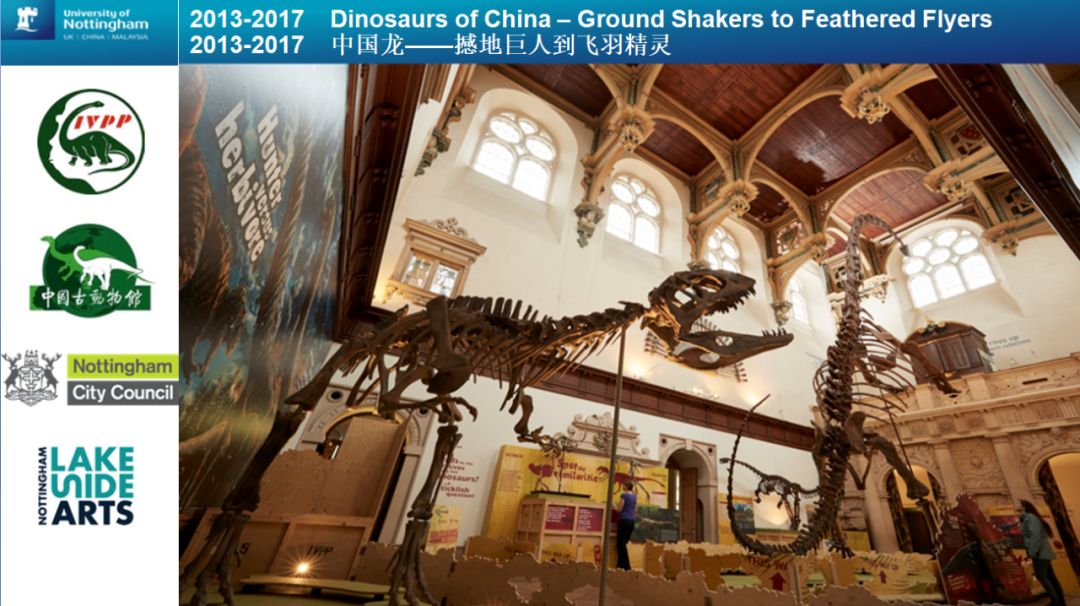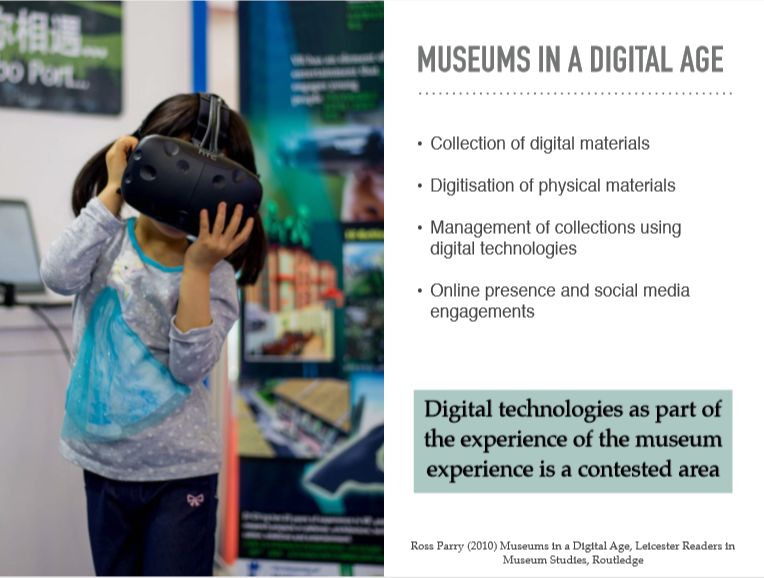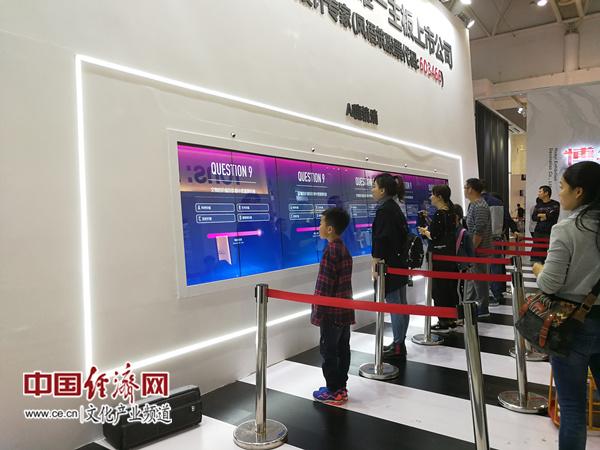Expo China UK Museum curation and IP development forum: win win cooperation and tell China story
- MPR
- Time:2020-12-15 15:54
Under the incentive of relevant national policies, in recent years, with the help of the Internet and new technology digital platform, Chinese museums share the excellent cultural resources owned by museums with the public, popularize and pass on the connotation of traditional culture in innovative and creative ways, so that more people love traditional culture, how to curate and create ideas, and tell Chinese stories well. Digital IP is a museum The top priority of work.
As the birthplace of modern museums, Britain plays an important role in the international museum industry. The concept of Museum curation is also at the forefront of international academic research. With the deepening of cultural exchanges between China and Britain, some common problems in the future development of museums need to be discussed and faced together, which is the significance of holding this forum.
This forum takes Chinese and British experts as the main body, combines the industry accumulation of Britain as the source of modern museums and the local exploration of the development of Chinese culture and Museum in the new era, and takes the cultural exchange and sharing between China and Britain as the media to contribute knowledge and experience on how to create and share the common wisdom of mankind and tell Chinese stories from the world perspective, so as to provide a platform for the innovation and development of cultural and Museum in the new era Inject new vitality.
Win win cooperation
Nottingham and the Chinese museum community: the road of win win cooperation
Wang Qi
Assistant professor of architecture, doctoral supervisor, QianLiJu Design Institute, University of Nottingham, UK
Wang Qi introduced the cooperation between Nottingham and Chinese Museum circles in recent years. In 2017, the exhibition of "Chinese Dragon: from earth shaking giant to flying feather spirit" jointly organized by Institute of Paleovertebrate and Paleoanthropology of Chinese Academy of Sciences and Nottingham City Hall was displayed in the hall of Nottingham natural history museum; from 2015 to 2018, University of Nottingham cooperated with Chinese Academy of Sciences to establish an innovative science popularization base; from 2015 to now, the University of Nottingham and the Chinese Academy of sciences have cooperated to establish an innovative science popularization base The Institute of zoology and Paleoanthropology has conducted a number of professional museum exhibition planning training, aiming to train curators / curators for Chinese museums.

From "giant" to "Legend of China"
After that, Wang Qi expressed his concern about how to train the audience to enter the museum. In his opinion, as far as curatorial exhibitions are concerned, attention to the internal relationship between architecture and exhibition is often easier to achieve the effect of "1 + 1 > 2". Internally, the curator of the exhibition should be responsible for the safety of the collection, and externally, the architect should be responsible for the narrative of the exhibition. In a sense, the combination of architects and curators can achieve very good results in the interpretation of space and the interpretation of exhibits. Wang Qi believes that telling a story is not the same as introducing knowledge. Exhibition planning should pay more attention to the inspiration of relevant contents and activities, so as to continuously stimulate the audience's subjective initiative and fully stimulate their cognitive and exploration interest.
Concept practice
Memory, education, information spirit: four key words for curating of narrative Museums
Yu Lebin
Deputy director of Chen Expert Committee on China's MICE economy research
Based on 40 years of working experience, Yu Lebin summarized the curatorial concept of narrative museums in the new era with eight words and four key words, namely, "memory", "education", "information" and "spirit". He pointed out that according to the patterns of Museum exhibition planning and form design, there are three modes of Museum exhibition: narrative mode, art mode and natural and scientific mode. Among them, narrative museums account for a large proportion of the total number of museums, and the exhibition is different from that of art museums and nature and science museums. Therefore, it is of great significance to explore the exhibition of narrative museums.

Source: Yu Lebin ppt
In the aspect of "memory", the exhibition and display of narrative museums should be changed from "cultural relic warehouse" to "narrator" of memory, not only to preserve historical memory, but also to let historical memory be truly perceived by later generations; in terms of "education", narrative museums should regard exhibition as the main means of implementing museum education, and put more emphasis on integrating education into the whole process of exhibition In terms of "information", narrative museums need to shift from "material objects as the core" to "materials and information sharing the core", and the exhibition should specifically state the objects, what these objects can "reflect" and "reflect", so as to achieve the goal From the aspect of "spirit", narrative museums not only need to narrate history with physical display and text description, but also establish the audience's mood connection of "past and today" and their expectation of "future" with the dimension of time value.
Story telling: Da Vinci, cat's date with audience
Dr Gabriele Neher
Teaching director, Department of art history, School of humanities, University of Nottingham, UK
Dr Gabriele Neher introduced the "Da Vinci sketch Exhibition" at Nottingham Castle in 2016, and shared her experience with the project. The exhibition is composed of 10 pieces of Leonardo's sketches collected by the British royal family, including chalk drawings by Leonardo da Vinci, sketches of human body, animals, water and plants, as well as some technical works. Dr Gabriele Neher said that from the beginning of the exhibition, many students and alumni from the University of Nottingham participated in the exhibition, and cooperated with Nottingham Castle in enhancing the visitors' experience, such as exhibition hall signage, event organization and social media operation. Among them, the most interesting is the pet life painting activities carried out in cooperation with the Nottingham cat cafe. Inspired by one of the works in the exhibition, Da Vinci's cat, lion and dragon, the event attracted a lot of public participation. For the students participating in the exhibition, they can not only enjoy the outstanding works of the Renaissance closely, but also participate in the conception, promotion, design and presentation of the exhibition, which provides more ideas for the museum to be close to the public.

Exhibition Poster (source: Dr Gabriele Neher's ppt)
Contemporary thinking of Museum exhibition planning
Li Lisong
Deputy director of Changsha Museum
Taking the practice of Changsha Museum as an example, Li Lisong discusses the innovative art of urban history and culture as IP, and refines the contemporary thinking of Museum exhibition planning. Li Lisong pointed out that the history and culture of a city should be regarded as the IP of the museum. Taking the basic display of Changsha Museum "Xiangjiang River going to the North - Changsha ancient history and culture exhibition" and "middle stream hitting water - Changsha Modern History and culture exhibition" as examples, this paper discusses how to narrate the history from three aspects: topic selection and location, display research and planning, display practice and innovation The museum is not only the projector of the old heritage, but also the generator of the new culture.

Application of digital technology
Strategy of digital technology application in contemporary museums
Professor Eugene Ch'ng
Professor of cultural computing, School of international communication, University of Nottingham, UK
Eugene ch'ng shared some of his views on curation with "strategies for the application of digital technology in contemporary museums.". He said that although the initial digital technology was controversial in the process of integrating into museums, the reason why it is so important is that digitization can solve many bottleneck problems of traditional exhibitions, and all digital technologies should return to human needs in the end. Nowadays, museums are no longer just a special educational institution, but also a very important place for social experience activities. "The audience is no longer just a passive recipient as in the past. Now they want to actively participate in the interactive experience.". In this regard, Eugene ch'ng suggested that in the digital exhibition, the audience should be provided with a time and space for arbitrary thinking, so that the audience can have a deeper understanding of the story behind the exhibits. "If in virtual reality, the audience can have a connection with cultural relics, so that modern people have a very strange cross space-time cultural memory, it will undoubtedly produce a very good communication effect.".

Source: Eugene ch'ng's ppt
Finally, Eugene ch'ng concluded that the application of digital technology should be people-oriented. In the design process of digital exhibition, on the one hand, the user experience should be fully considered. At the same time, before the design, users should be able to participate in advance as much as possible, and the interactive participation of society should be fully considered, so as to effectively realize the possibility of emotional connection between (virtual) technology and exhibition itself and people themselves.
Resonance of art and science and technology: innovation dimension of Digital Cultural Expo IP
Feng Zuguang
Doctor, public art teacher, School of fine arts, Tsinghua University
In the era of experience economy, the culture and museum system emphasizes the user's perceived value more than ever. In this regard, Feng Zuguang shared some of his views on the development of digital culture IP. In his opinion, the digitization of existing cultural and Museum IP is often carried out from the perspectives of extending experience media, enriching experience forms, and transforming content carriers. But on this basis, the real digital culture ip should not only be understood from the national, national, main culture and other ways, but also from the cultural, regional and universal dimensions. Establishing a certain connection has become the core of digital cultural IP innovation. At the same time, the innovation dimension of Digital Cultural Expo ip should also fully consider the resonance between imagination and knowledge, the resonance of multi-dimensional world and parallel space-time, the resonance of group energy and social emotion, so as to do a good job of "ritual in the digital era". For example, in his opinion, a more suitable IP development method for a small and medium-sized Museum (a certain collection of cultural relics) may not be aimed at the collection, but a new content based on the development of relevant geographical, historical and cultural elements, so that the museum can exist as a kind of physical proof and specific theater space.
On the application of digitalization in museums, Zhu Yicheng, assistant professor of Journalism School of Beijing Normal University, and Liu Yang, maker tutor of Tsinghua University Art and science and technology innovation base, respectively conducted "exhibition, interaction and communication: application cases, enlightenment and trend of machine learning and artificial intelligence in museums" and "from digitization to intellectualization: on the development of Museum intelligent service" Exhibition and practice ".
Legal issues on IP development of cultural relics
Value co creation: rules and modes of IP copyright operation in international cultural and Cultural Expo
Wang Siyuan
Professional lawyer for entertainment media business
Combined with the rules and modes of IP copyright operation in international cultural and Museum, Wang Siyuan, a full-time lawyer in media and entertainment business, said that in the development of icibo IP, the operation of intellectual property rights with copyright as the core and supplemented by appearance patents, trademarks and trade names runs through the whole situation. The "right chain" is not only the organic connection of every link, but also the cornerstone of project development. If there are defects in the compliance of intellectual property rights, it may have hidden dangers for the subsequent development and progress of the whole project. Similarly, the intellectual property arrangement of IP development of icibo is mainly decided by the parties to exercise autonomy through agreement. Among them, the scope of authorization, the ownership of rights, the way of use, the payment of consideration and the exercise of the right of approval should be the top priority. He also said that the current IP development of International Cultural Expo has formed a complete system, mature operation, and detailed and complex related protocols. As a new force in the IP development industry of cultural relics and museums, although museums in China have a good situation of rich collections and broad development prospects, more efforts should be made in legal understanding and contract negotiation and drafting.
Conclusion:
The data shows that there are more than 5000 museums in China today. What kind of way should we establish effective connection with the audience for the cultural relics that cannot be measured in the collection, so as to form a cross space dialogue and exchange. "It is of great significance to explore cultural resources in depth, reproduce the collection story by combining modern technology and artistic means, follow the history and culture, and build a bridge between the audience and the museum." QianLiJu Design Institute founder partner Zhang Bingkun said so.
2018-12-10
Editor: Pumpkin
Recommended Content
-
Sino British Museum curation and IP development forum
2020-12-15 15:57 -
Carrying, cultural and Museum IP helps cultural relics "live"
2020-12-16 15:18 -

Handling | development of cultural and Museum IP: building an effective connection with the audience based on people
2020-12-16 15:28 -
Handling | There are more options for IP development
2020-12-16 15:38
News
-
Announcement of the final evaluation results of the first China Exhibition Art and exhibition technology innovation competition
-
"The oldest smiling face" in the world at the National Museum of Ukraine
-
Handling | There are more options for IP development
-
Handling | development of cultural and Museum IP: building an effective connection with the audience based on people
-
Carrying, cultural and Museum IP helps cultural relics "live"
-
The platform construction project of Digital Museum of China's lost overseas Artworks (not displayed) will be launched soon
-
Scientific and technological innovation promotes cultural confidence, and the 2020 collaborative platform Conference on the industrialization and application of cultural relics protection equipment was held
-
Machine learning predicts interaction time between museum visitors and exhibits
-
From offline to online, how can digital technology reshape museums?
-
Cultural and natural heritage day | intangible cultural heritage "in the clouds" and "show" in the studio

